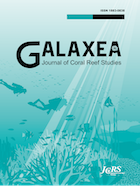Current issue
Displaying 1-4 of 4 articles from this issue
- |<
- <
- 1
- >
- >|
Photogallery
-
Article type: Photogallery
2024 Volume 26 Issue 1 Pages 1-2
Published: 2024
Released on J-STAGE: February 01, 2024
Download PDF (1002K)
Note
-
Article type: Note
2024 Volume 26 Issue 1 Pages 3-8
Published: 2024
Released on J-STAGE: March 04, 2024
Download PDF (1870K) -
Article type: Note
2024 Volume 26 Issue 1 Pages 9-17
Published: 2024
Released on J-STAGE: July 05, 2024
Download PDF (1314K)
Photogallery
-
Article type: Photogallery
2024 Volume 26 Issue 1 Pages 18-19
Published: 2024
Released on J-STAGE: July 27, 2024
Download PDF (936K)
- |<
- <
- 1
- >
- >|
